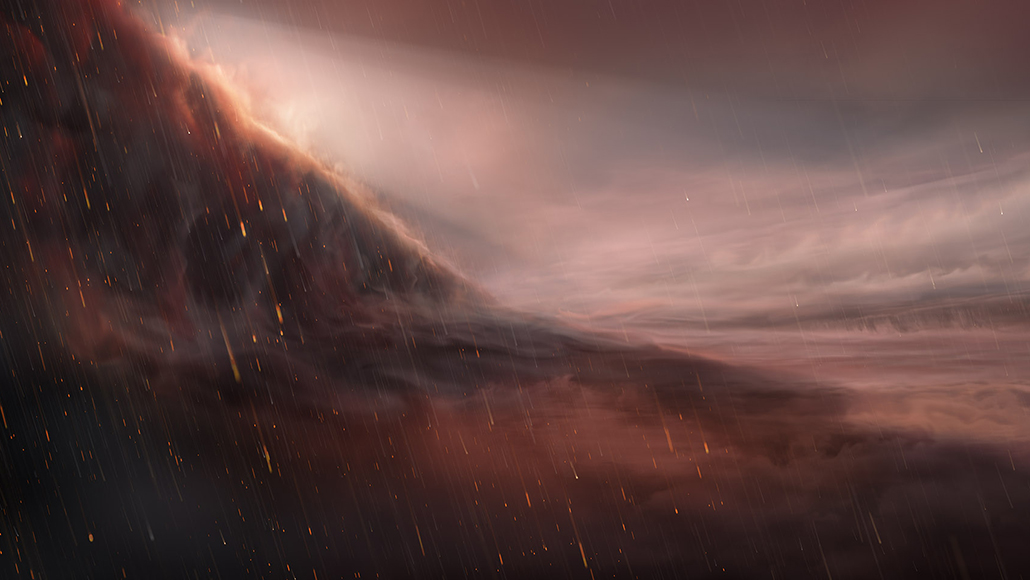
On one distant world, “heavy metal” could be a weather forecast. Telescope observations indicate that an exoplanet nearly 400 light-years away has iron rain.
The planet, dubbed WASP 76b, is an extreme kind of exoplanet known as an ultrahot gas giant (SN: 7/30/19). These worlds “are complete oddballs,” says astronomer David Ehrenreich of the University of Geneva. They get blasted with so much radiation from their suns that their dayside temperatures rival some stars (SN: 6/5/17). Meanwhile, the nightsides of ultrahot gas giants tend to be much milder.
Until now, no one has gotten a close enough look at an ultrahot gas giant to see how such stark temperature contrasts affect atmospheric chemistry across the planet. Ehrenreich’s team used the Very Large Telescope in Chile to examine starlight filtering through WASP 76b’s atmosphere as the exoplanet passed in front of its sun during two orbits in 2018. Those observations revealed the chemical components of different regions of the atmosphere.
While the atmosphere showed traces of iron gas where the planet was transitioning toward nighttime, no iron was detected at the transition from night to day, researchers report online March 11 in Nature. This suggests that, as gaseous iron on WASP 76b’s dayside swirls toward the nightside — which is almost 1,000 degrees Celsius cooler — the iron condenses into liquid raindrops. Because those raindrops fall deep into the atmosphere overnight, astronomers don’t see iron in the atmospheric gas as it moves from night to day.
“It’s a giant gaseous planet, so there’s no ground” to get covered in iron puddles, Ehrenreich says. Instead, the researchers suspect that iron raindrops eventually reach depths so hot that they vaporize back into iron gas.
Source: Space & Astronomy - www.sciencenews.org


